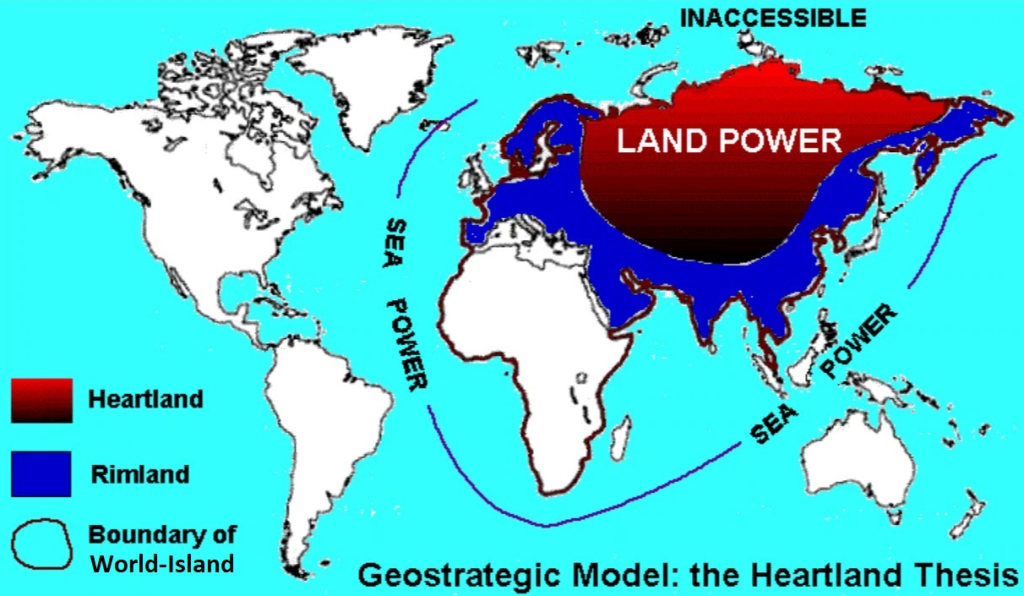by DAVID BROWN | CLEARNFO.com | August 12, 2018
The Old Silk Road (114 BC – 1450s AD) was an ancient network of trade routes that connected the East and West: From China, India, Persia (Iran), Arabia, Somalia, Egypt to Europe.

The Old Silk Road – Connecting China to Europe
China’s New Silk Road
Today, China is planning to re-hydrate these ancient trading routes with a new modern Silk Road having already spent more than the US spent on WWII’s Marshall plan; with another $1.3 trillion waiting to build railways, roads, ports, and power grids over the next 10 years.

China’s new Silk Road – the Belt and Road Initiative
“Who rules the World Island commands the world”
The new Silk Road is now called the “Belt and Road” initiative, and is under active construction. With all this excitement and activity, one can’t help but think of Helford Mackinder’s (1861 – 1947) Heartland Theory of the World Island and his prescient words:
“Who rules Eastern Europe commands the Heartland
Who rules the Heartland commands the World Island
Who rules the World Island commands the world”

Helford Mackinder – Heartland Theory of the World Island
The Rimland is not enough
During the pinnacle of the British Empire’s power, Briton found it too costly –and the logistics technologically impractical– to go inland to conquer the ‘Heartland’ of the ‘World Island’; so the Empire chose to control the seas and impose its will inward from the Rimland. Once the greatest sea power the world had ever known, the Empire –weakened by The Great Wars– encouraged its former colony (America) to fill the vacuum. Still, the Heartland of the World Island –and the power it could unleash– was mostly ignored or forgotten by many –until recently. Though Mackinder’s Heartland theory is outdated, it’s basic premise is still valid and it seems clear China believes it can command the world by commanding the World Island.
NOTE: The “heartland” was also referred to as the “pivot area” and as the core of Eurasia. Mackinder considered all of Europe and Asia as the World Island.
Additional reading on this topic
- More on this topic from ClearNFO: Eurasia, the “World Island”
- Wikipedia: The (old) Silk Road
- Wikipedia: The (new) Silk Road now called the Belt and Road Initiative
- Wikipedia: The Geographical Pivot of History
- The Secret Battle for Africa by James Corbett of the corbettreport.com (August 11, 2018)
- Bloomberg News (August 1, 2018): China’s Empire of Money Is Reshaping Global Trade
- Xi Jinping’s Path for China (Aug 10, 2018) by Stratfor Worldview
- China’s Belt and Road investment map by Agne Blazyte, Nov 13, 2018
- How A WWII Agreement Allows Trucks To Travel From China To Europe In Just 13 Days
